MOLINE, Ill. — Air conditioning units are buzzing in the distance, the cicadas are singing their magical song, and kids are going back to school; the perfect time to start thinking about the outlook regarding our upcoming winter, right?
Well, if you are a follower of the Farmers' Almanac, you've gotten an early sneak peek at what could be in store for the Quad Cities later this year.
The Farmers' Almanac just released their annual winter forecast, so we'll use that to compare with some of the other forecasts floating around the interwebs, and then I'll add my two cents in terms of what I'm expecting this winter.

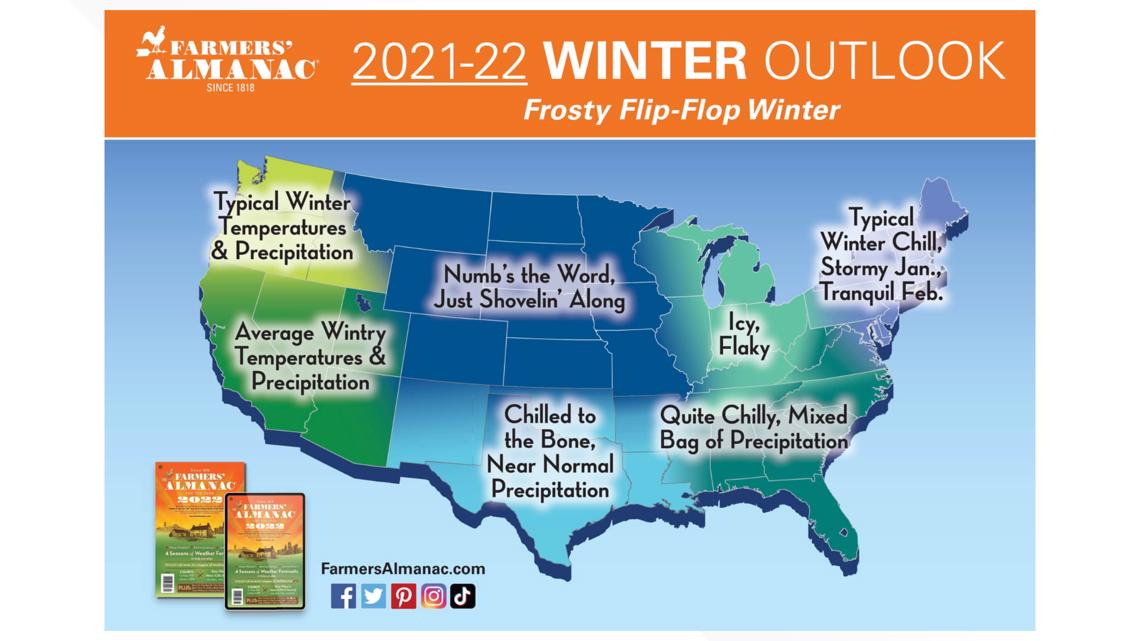
First, let's go back and revisit the forecast from the Farmers' Almanac for the previous winter season. Their forecast called for, "Numbs the Word, Just Shovelin' Along" for the Midwest and "Icy, Flaky" for areas to the east.
Let's see what actually happened last winter.

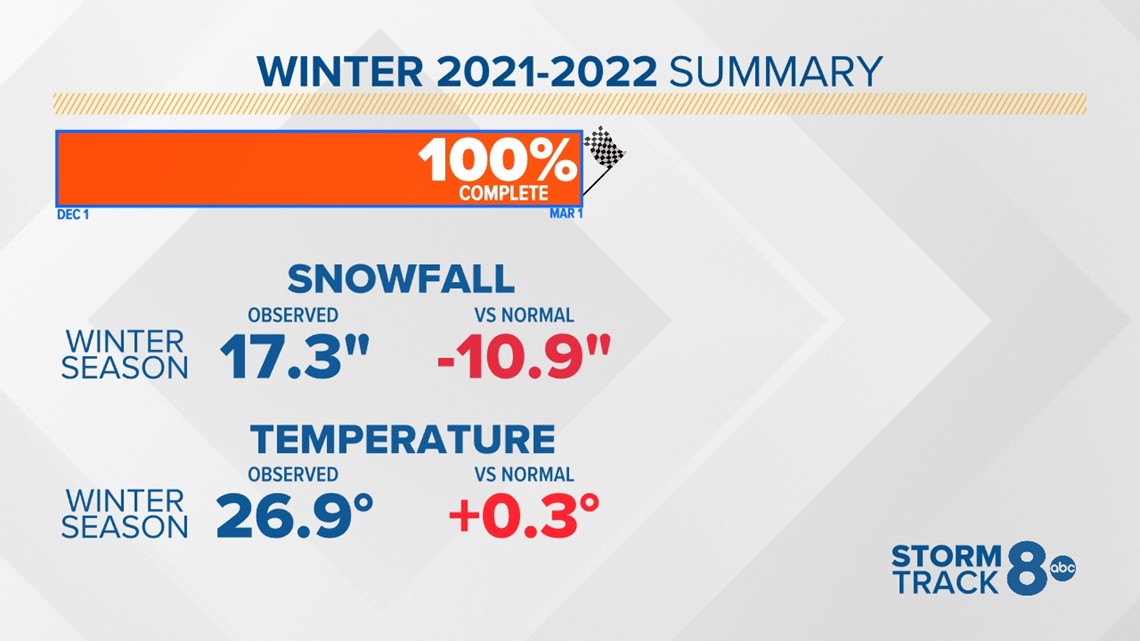
It was a lackluster winter here in terms of snowfall with our totals coming in nearly a foot behind average. This led to widespread drought conditions developing by the following spring.
Temperature-wise, it was a near-even split with readings only three-tenths of a degree warmer than average. I wouldn't see that as "numb" by any means, though we did have some colder days, there wasn't anything too extreme about the previous winter season.

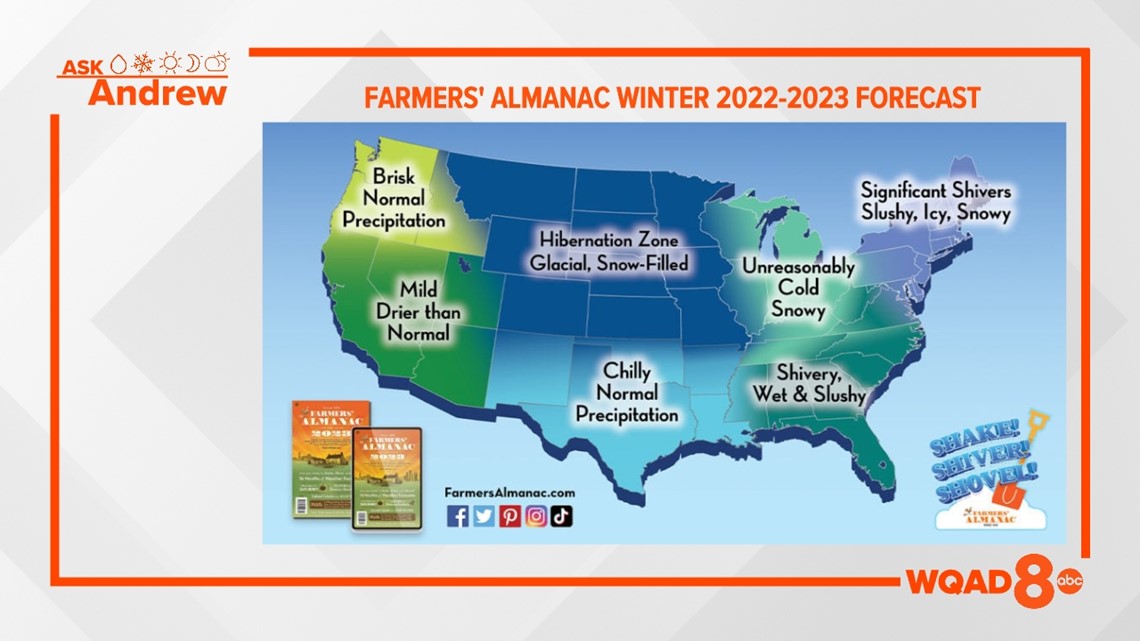
This year's prediction calls for the Quad Cities to be a hibernation zone along with plenty of snowfall on both sides of the Mississippi River. So, what factors will influence this prediction in the coming months?

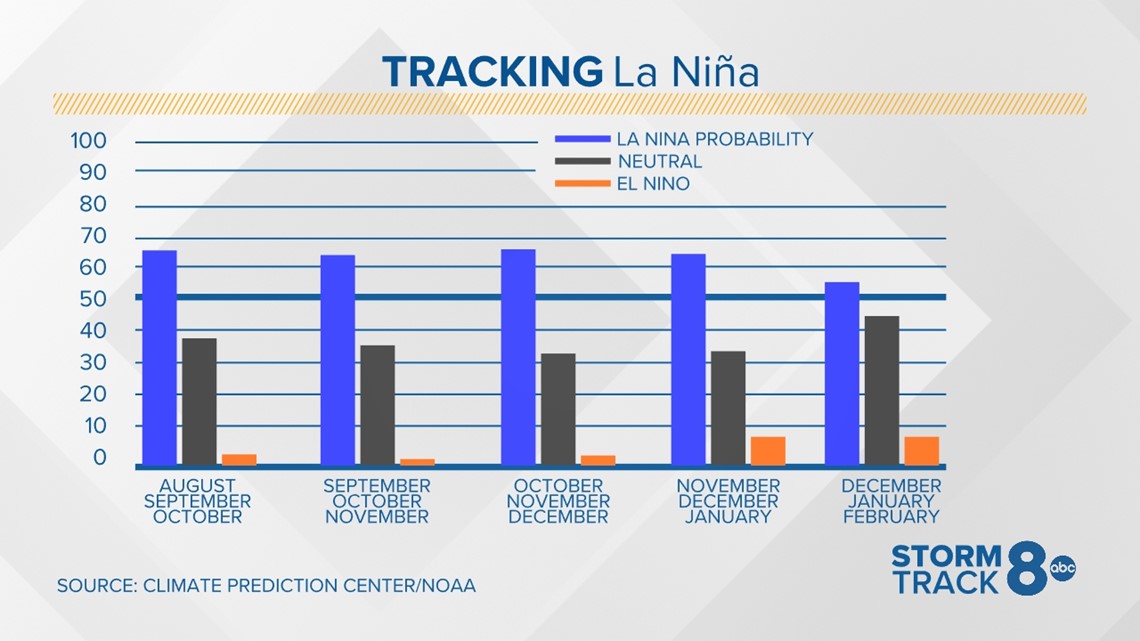
La Niña conditions are expected to persist through the fall and even the early part of the upcoming winter season. NOAA predicts a probability of at least 60% that La Niña hangs around through January of 2023.
This will be the third winter season in a row influenced by La Niña here in the Quad Cities. Typically, these conditions favor above-average snowfall and below-average temperatures. However, as we have seen in past years, this rule doesn't always persist and pan out.

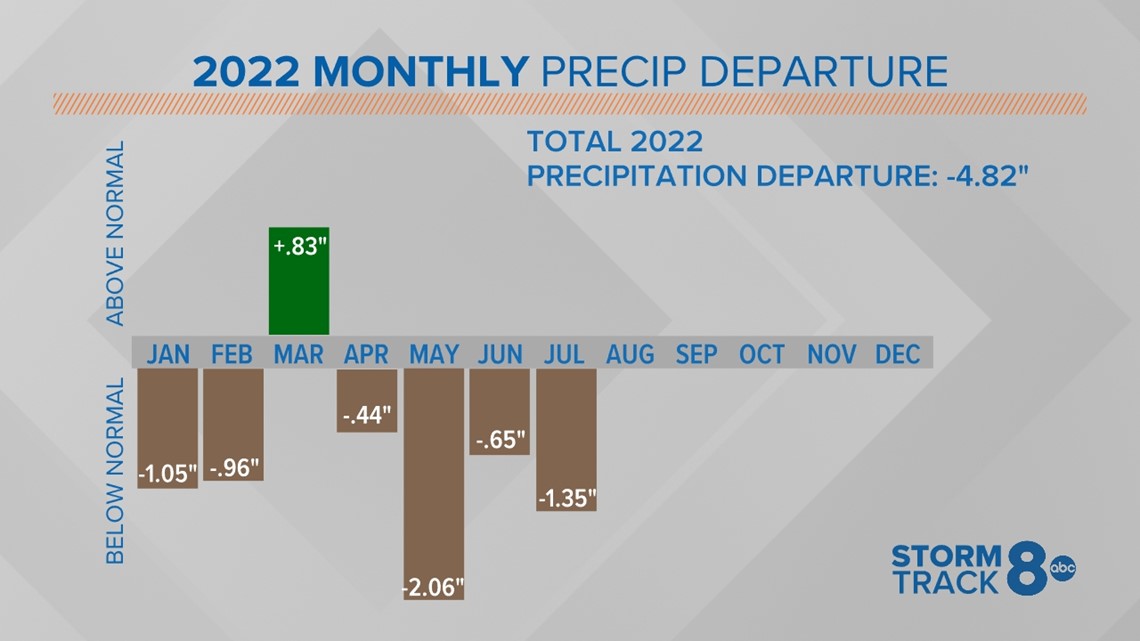
This past winter, as we have shown above, precipitation continued to decline and remained below normal until we hit the month of March. We also had abnormally dry conditions throughout much of the spring and summer months. That definitely makes this past season an anomaly.


It was a similar story when you look at the observed temperature pattern, especially for the 2021 season. January was unseasonably warm while we nearly froze in February followed by more significant warmth towards the spring.
So, what's the verdict for winter 2022-2023? I still think it's too early to tell.
Typically, more signs will emerge by late October and into early November. We know there will be a La Niña influence, the question is just how strong that influence will be. At this point, I would count on seeing something similar to what we have seen in the past two years.
Have a question that you would like me to answer in a future Ask Andrew segment? Submit it here!

